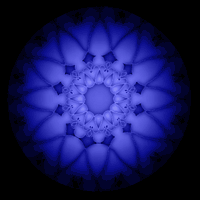Mars update, 15 January 04
The Mars rover Spirit rolled off of its platform onto the surface of Mars without any mishap. Here are views from the front camera, looking out over the terrain, and the rear camera, looking back at the platform. The rover now must use its panoramic cameras to find the sun, so it can figure out how to point the high-gain antenna toward the Earth.
I wonder if the SETI@Home guys ever inadvertently pick up stuff from the Mars missions?
Interesting factoid: the rover's digital cameras are 1 mega-pixel CCDs, and compared to commercial CCDs the individual pixels are quite large.
Puts the whole marketing driven mega-pixel-madness thing into perspective, doesn't it? The Hubble telescope, which has been giving us stunning images for years, uses an 800-by-800 array of pixels. So when it comes down to it, optics are the most important part of the camera, which was true of film-based cameras as well.
I wonder if the SETI@Home guys ever inadvertently pick up stuff from the Mars missions?
Interesting factoid: the rover's digital cameras are 1 mega-pixel CCDs, and compared to commercial CCDs the individual pixels are quite large.
In the consumer market, the pixels themselves get smaller, which has an impact on image quality.
Why? For one thing, smaller pixels are less light-sensitive.
Also, the lens quality might not support the additional pixels. As the receptors get smaller, a higher quality lens is needed to properly focus light onto each pixel. So where each pixel ought to capture different light information - say perhaps a subtle shading change on the subject's cheek - the same information can get spread across several pixels after passing through a lower quality lens.
Puts the whole marketing driven mega-pixel-madness thing into perspective, doesn't it? The Hubble telescope, which has been giving us stunning images for years, uses an 800-by-800 array of pixels. So when it comes down to it, optics are the most important part of the camera, which was true of film-based cameras as well.

0 Comments:
Post a Commentreturn to front page